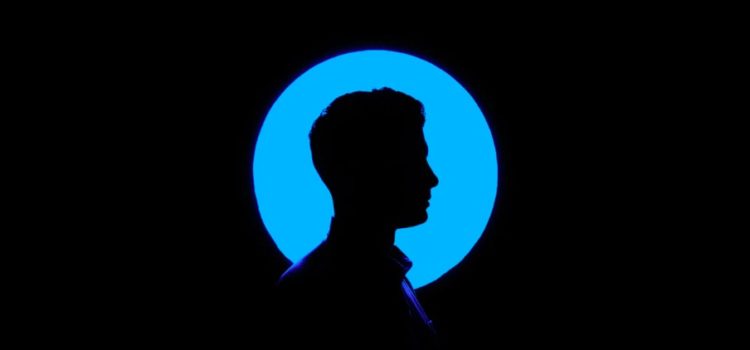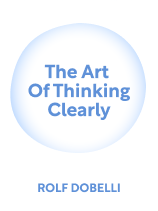

This article is an excerpt from the Shortform book guide to "The Art of Thinking Clearly" by Rolf Dobelli. Shortform has the world's best summaries and analyses of books you should be reading.
Like this article? Sign up for a free trial here .
Are your decisions rooted in rationality? What are some of the most common biases in decision-making?
You probably think of yourself as a rational and logical human being who makes decisions based on logic and sensibility. However, your decision-making may not be as logical as you’d like to believe. Logical fallacies affect everyone, are extremely difficult to avoid, and can hinder your decision-making ability.
Keep reading to learn about some of the most common decision-making biases, how to recognize them, and how to work around them.
Alternative Blindness
Alternative blindness is a decision-making bias where you hone in on two options, neglecting alternatives. This bias can manipulate you to follow other people’s plans. It makes Option A seem like your only choice when a different option could actually suit you better.
To counter alternative bias, Dobelli recommends looking at underrepresented options. Often, a more moderate third option may fit your situation better than the extremes of Options A and B.
For example, many people feel pressured to attend college. The situation is presented as Option A: Go to college and get a good job, vs. Option B: Don’t go to college and don’t get a good job. However, there are other options, including Option C: Go to trade school and get a good job, or Option D: Complete an apprenticeship and get a good job. Option A is considered “standard”, but high tuition can make college a hindrance rather than a help. Looking at the underrepresented options can provide a more fulfilling and profitable experience than falling for alternative bias.
The Planning Fallacy
People make plans that fail because they believe themselves to be more capable than they really are. They overestimate the benefits of their actions and minimize the risk and cost involved in their plans.
Dobelli recommends mitigating the planning fallacy by estimating risks and costs higher than feels necessary and benefits lower than feels necessary. Also, avoid the impulse to plan in detail. Narrowing your focus on details makes you more likely to be surprised by unexpected events, exacerbating the fallacy.
Liking Bias
The liking bias is the tendency to grant requests from people you know and like. This bias is often used in sales to influence purchasing decisions. According to Dobelli, there are three main components to liking someone that are manipulated in marketing:
- 1. Physical attractiveness. You’re more likely to see attractive people as likable, which is why only attractive people appear in advertisements.
- 2. Similarity. You find people who look, sound, or have experiences like you more likable. Marketers manipulate this through “mirroring”: purposefully mimicking other people’s behavior and speech patterns so the other person will like them and be more likely to purchase their products.
- 3. They already like you. If someone is being friendly and makes it clear that they like you, you’re more likely to like them back. Marketers manipulate this tendency through flattery.
Dobelli suggests avoiding liking bias by separating the seller from the product. Would you purchase the product if the person selling it to you wasn’t there, or if they were unlikeable?
Neglect of Probability
People struggle to make good decisions because they neglect to consider the probability or risk involved in those decisions. Logically, they should choose the option with the highest probability of going well for them and the lowest risk of going badly. However, people instead choose the option that will have the biggest positive impact on them if it occurs, regardless of how likely it is to occur. For example, Dobelli argues that people are more likely to invest in a risky stock that could have a huge return on investment than a safe stock that has lower returns.
(Shortform note: Dobelli claims that investors frequently invest solely based on the possible yield of an investment, rather than its risk, and uses this example to prove the validity of his claims regarding neglect of probability. However, this example isn’t accurate: Investors use various risk management strategies when investing, including analyzing the historical value of the stock to determine the risk of its value changing in the future.)
Survivorship Bias
Survivorship bias is the belief that you have a better chance of succeeding than you actually do because success stories are more widely publicized than failures. Widely publicized information is easier to access, triggering the salience effect: You latch on to this information when making judgments about your chance of success, ignoring the many invisible stories of failure.
How can you avoid survivorship bias? Dobelli says to research statistics and examples of failure in the field you’re considering. This will give you a better idea of your chances of success. (Shortform note: Start your research by asking “What am I missing?” and looking for holes in your data. In addition, be careful when researching: If your sources are incomplete or suffering from survivorship bias themselves, they won’t help you ascertain reality.)

———End of Preview———
Like what you just read? Read the rest of the world's best book summary and analysis of Rolf Dobelli's "The Art of Thinking Clearly" at Shortform .
Here's what you'll find in our full The Art of Thinking Clearly summary :
- A detailed look at the most common logical fallacies that inhibit decision-making
- How to recognize and overcome these fallacies to make better decisions
- Why you value things for arbitrary reasons






